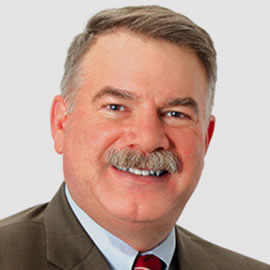‘The doctor of the future will give no medicine but will instruct his patient in the care of the human frame, in diet, and the cause and prevention of disease.’ — Thomas A. Edison (1847-1931)
My military medical career was shaped and defined by the struggle during the Iraq and Afghanistan wars to better manage combat casualty pain in the modern rapid evacuation environment. I became known as a pain specialist in military medicine early in these conflicts. During one of my many meetings with military medical leaders of the time, I was asked the following question by a senior officer at the Pentagon: Dr. Buckenmaier, please tell us what medication we can use to manage casualty pain that is uniformly effective, safe to use with minimal side-effects, and is not addictive.
I initially thought this question was a joke designed to expose my naivety regarding pain and its management on the battlefield. Then, I had one of those “Animal House” movie moments. My more-mature audience will remember the movie when Pinto is confronted with his good and evil angels regarding an ethical decision involving a young woman. My bad self immediately prompted me to say something along the lines of, “If I knew that drug, I would not be speaking with you dolts; I would be filthy rich on a beach somewhere with a rum drink in hand.” Fortunately for me and my career, my better angel reminded me just how simple our understanding of pain and its management was then (and sadly still is). The question I was being asked was without malice. Instead, it was demonstrative of a fallacy of modern medicine—the belief there exists a single answer or easy button for the health conditions that plague human existence. Spoiler alert: There ain’t no easy answers regarding human health.
I took a deep, cleansing breath and calmly explained to the Pentagon officer that pain was as complex and varied as human cancer. No one approach would solve the issue consistently for every patient without unwanted and occasionally severe consequences. Needless to say, this was not the answer these leaders were looking for. We all left the meeting disappointed.
There appears to be a deep-seated need in our species to find the one answer, the solution, the drug, that will solve the health issues we face in our lifetime. Most (good) physicians understand that the human body is more sophisticated and defies simple solutions to complex health issues. Unfortunately, the business of medicine continually reinforces the idea that there are pharmacologic or procedural solutions to the myriad health issues (real and imagined) for which they can sell you a pill or device. The relationship between pain management with opioids and the disaster of opioid misuse and abuse is representative of the dangers of this practice. Perhaps medical science someday will deliver on the promise of “Star Trek,” where a doctor named Bones can inject a potion through your uniform and miraculously fix what ails you. Unfortunately, this is not the case today. Clinicians should never miss an opportunity to remind their patients of this medical reality.
I am not suggesting that modern medicine is not replete with procedures, pills and potions to combat disease. On the contrary, our collective advance in managing the trauma and illness that befall humans is laudable. That said, as healthcare providers, we should never oversell our abilities and always have the humility to clearly state and explain the limits of our science. I felt I was at my best as a physician when educating a patient about their body and how they might manage their particular condition without my inflicting a procedure or potion on them. I believe it is the height of medical hubris to suggest to a patient we physicians can fix anything in the human body. At best, we can manipulate anatomy, endocrine and metabolic functions to allow the body to heal itself. We truly serve our patients best when we take the time to explain the good, bad and ugly of our therapies. Providing the therapy pales in importance to the time spent educating the patient about the treatment.
Too often, Pam (a nurse) and I need to explain further after friends and family interact with medical providers. Many clinicians write prescriptions with little instruction beyond what is printed on the pill bottle label. In my own field of pain management, I often must explain that folks do not need to take their opioid every 4 hours only because the bottle label says so. I find the appalling lack of understanding by many patients regarding their prescriptions frightening. I place the blame for this squarely on the clinician’s shoulders.
Our society is weaned on instant gratification in most aspects of their lives. Fast food, instant entertainment, effortless transportation and communication. Human health is not subject to this one-and-done modern reality. We must teach our patients that health is not something you achieve or finish; it is a lifetime of effort. Often, I hear patients complain that they tried yoga, acupuncture or massage for their musculoskeletal pain, but they did not work. As if any one of these modalities would solve their issue alone. They are often disappointed when I explain the management of their condition involves exploring a variety of treatment approaches, often in concert, that, in summation, can be successful. In short, they don’t like that health requires work on their part, but invariably they appreciate the honest discussion and education regarding their bodies and the limits of medicine.
Although I have stated many times in this column the greater importance of educating our patients regarding their health as opposed to inflicting therapies upon them, it bears repeating. There is no easy button or single solution for health. There is only understanding and education regarding disease. First and foremost, physicians are health educators to our patients. The more we live this reality in our practices, the better our patients will be for it.


